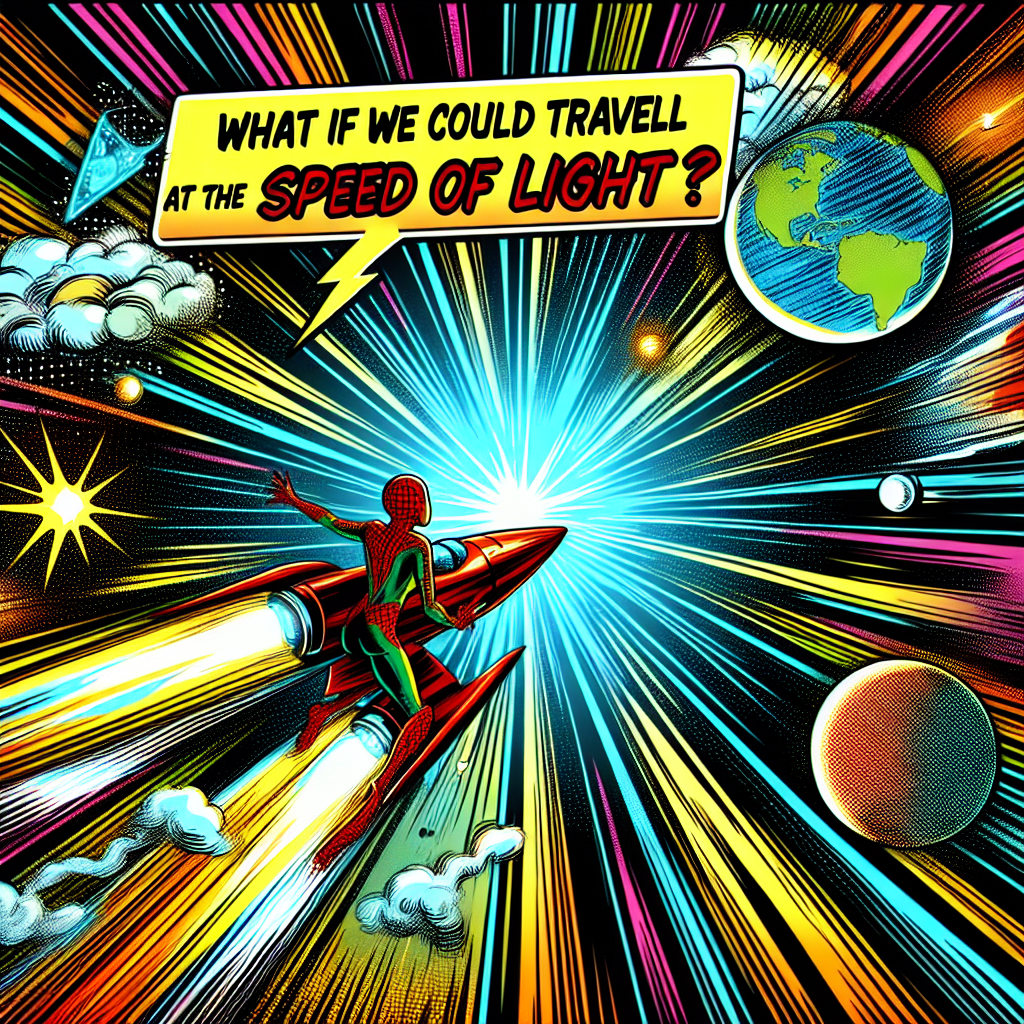Traveling at the speed of light is a fascinating concept that challenges our understanding of space and time. To put it simply, if we could travel at the speed of light, we'd be moving at approximately 186,282 miles per second. That's like circling the Earth over seven times in just one second.
Let's consider what happens when objects move at high speeds. As an object approaches the speed of light, its mass increases, and time appears to slow down relative to outside observers. This is known as time dilation, a fundamental concept in Einstein's theory of special relativity. Think of it like being on a train, watching the stations whizz by. The faster the train moves, the slower your clock ticks compared to someone standing on the platform.
Now, imagine being on a spaceship traveling at 90% of the speed of light. From your perspective on the ship, everything seems normal – you're enjoying the in-flight entertainment, snacking on space snacks, and chatting with your fellow passengers. But for an observer watching from Earth, time on your spaceship is passing slower than on our planet. This effect, known as time dilation, becomes more pronounced as you approach the speed of light.
Here's a real-life analogy to help illustrate this concept: imagine two twins, Alice and Bob. Alice stays on Earth, while Bob boards a spaceship and travels at 90% of the speed of light to a distant star and back. When Bob returns, he'll have aged a few years, but Alice will have aged decades. That's because time passed slower for Bob during his high-speed journey.
As you approach the speed of light, strange things begin to happen. The energy required to accelerate an object increases exponentially, making it nearly impossible to reach the speed of light. It's like trying to push a massive, heavy box up a steep hill – the closer you get to the top, the more energy you need to keep pushing.
In addition to energy concerns, there's another significant challenge: the issue of acceleration. To reach the speed of light, you'd need to accelerate an object continuously, which would require an infinite amount of energy. It's like trying to get a car from 0 to 60 miles per hour instantly – it just can't be done.
Let's not forget about the concept of length contraction. As an object approaches the speed of light, it appears shorter to outside observers. Imagine a ruler that's 12 inches long when it's at rest. As it accelerates to high speeds, the ruler appears shorter to an observer standing still, until it's almost imperceptible at the speed of light.
Another consequence of traveling at the speed of light is the phenomenon of relativistic mass. As an object gains speed, its mass increases, making it even harder to accelerate. It's like trying to push a heavy ball up a hill – the more you push, the heavier the ball becomes.
Furthermore, if we could travel at the speed of light, we'd encounter significant problems related to information transmission. Since nothing can reach the speed of light, it would be impossible to send or receive information during the journey, making communication with Earth or other spacecraft impossible.
In conclusion, traveling at the speed of light is not currently possible with our current understanding of physics. The energy requirements, acceleration challenges, and strange consequences of special relativity make it a significant hurdle to overcome. However, exploring these concepts helps us better understand the fundamental laws of the universe and pushes the boundaries of human innovation.

Popular Space Questions
Find answers to the trending space questions being asked by our community on social media.
- How many galaxies are there in the universe?
- What would happen if a rogue planet entered our solar system?
- How far is Pluto from Earth?
- How many planets are in the Milky Way?
- How many planets are in our solar system?
- How big is the Earth?
- What are the planets in order?
- How big is the universe?
- What would happen if a pulsar's beam hit Earth?
- What if we found a way to manipulate gravity?